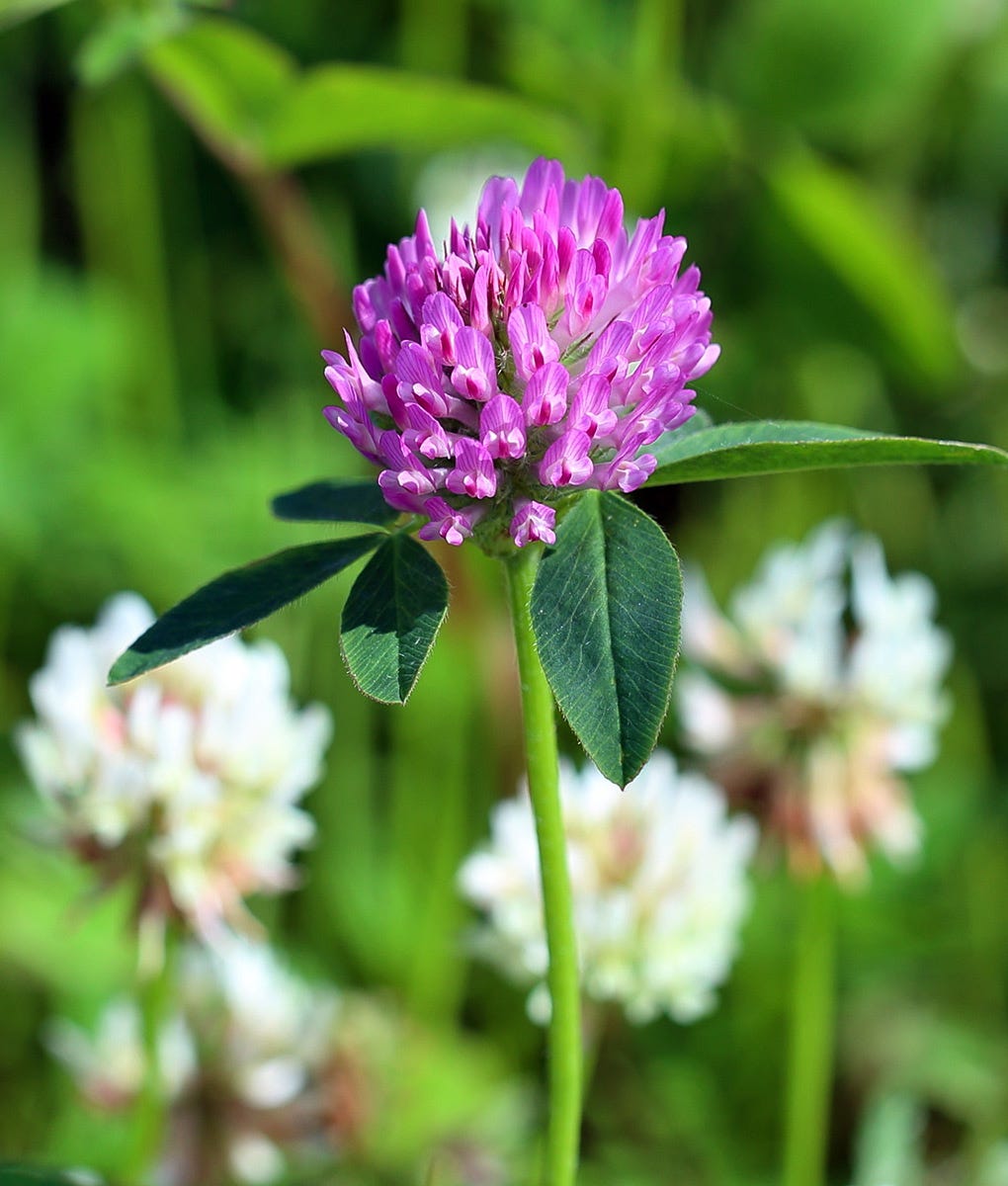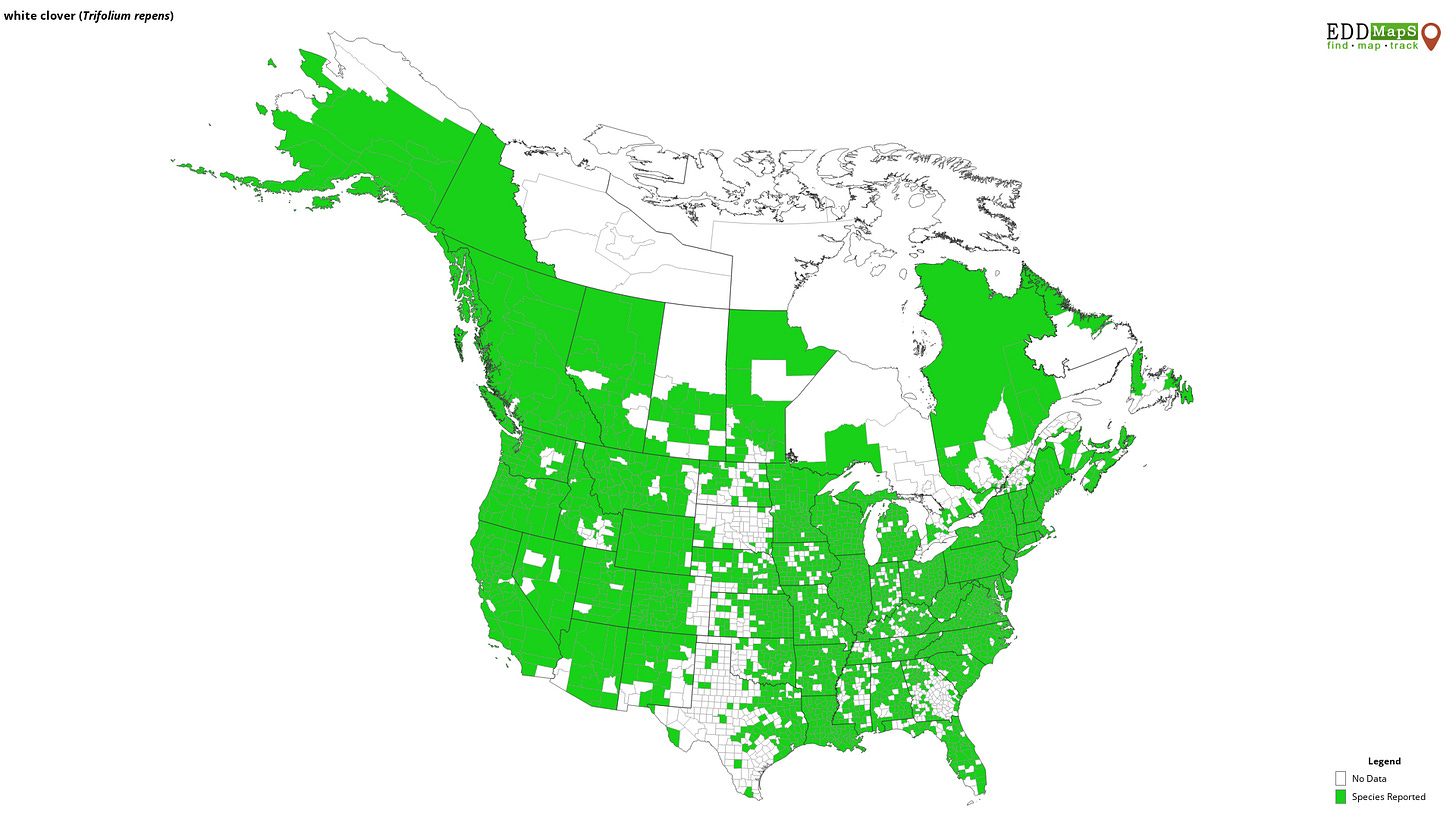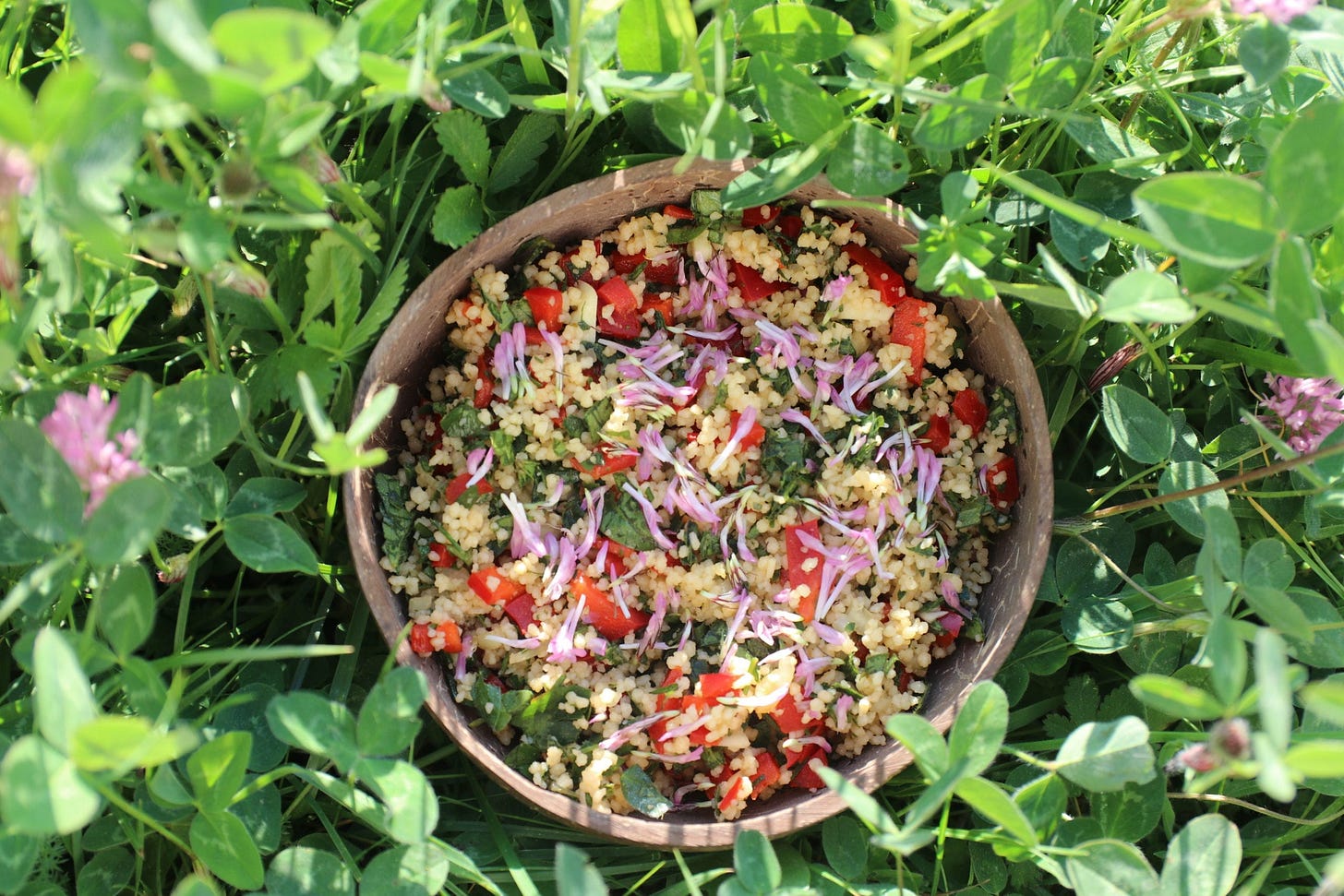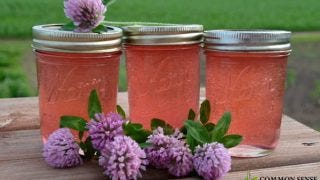CLOVER
Providing nourishment for the body, nitrogen for the soil, food for bees and good luck to boot!
Known as seamróg to my Celtic ancestors, she provides medicine for the soil, nourishment for bees and food/medicine for humans too.
I love to plant clover in with our perennials (both in the ground and in pots) as helpful companion plants for nitrogen fixation and boosting pollination rates.
Many have been conditioned to see clover as an unwanted “weed” and they go to battle trying to rip it out of their perfectly manicured monoculture gardens. However, in reality (outside of arbitrary superficial human delusion bubbles) this plant offers many gifts to not only humans and the soil, but pollinators as well.
Clover is a pleasant plant containing many nutrients that offer medicinal benefits such minerals like calcium and Vitamins B and C. Clover also contains antioxidants such as Anthocyanins. Clover is primarily nutritive, but also used to support proper lymphatic function (alterative), immune support, healthy skin, and proper endocrine function. It does contain genistein, daidzein, and biochannin-A among other isoflavones and concentrated standardized remedies made from this plant deliver these chemicals in an isolated state. Since the plant is so nutritionally complex, it is probably best to use it in its unadulterated form as an extract or tea. Supplements high in these types of flavonoids are generally useful as a tonic for menstrual irregularity and menopause.
This plant may be ignored (or even disliked) by some but she was revered and cherished by many ancient cultures.
In Russian and Chinese traditional use the floral tea is used to support bronchial-respiratory health. It has also been used as a wash, and internally both as a tea and an extract. Because of it’s nutritional complexity it has been recommended for convalescence, brewed as a tea from the freshly dried flowers. If you are selecting dried flowers to make tea, it is best to avoid the material if it is brown. This indicates that the material has oxidized probably due to improper drying, and storage.
Clover extract and tea is used for prevention and treatment of respiratory conditions like whooping cough, colds, asthma and bronchitis. It helps to reduce discomfort during illness, and has the ability to loosen phlegm.
Because it can potentially calm bronchial spasms, improve sleep quality, and help flush extra mucus and fluids from the respiratory system, it’s beneficial to try as soon as you feel an illness coming on.
Red clover and white clover make a tasty brew with a soothing, sweet punch. Infuse both the flowers and leaves (either fresh or dry) in boiling water for 30 minutes. The iced version pairs especially well with raspberry leaf or mint.
Habitat of the herb: Grassland and lawns, preferring a calcareous clay soil.
Edible parts of Clover:
Leaves - raw or cooked as a potherb. The young leaves are harvested before the plant comes into flower and are used in salads, soups etc. They can also be used as a vegetable, cooked like spinach. The leaves are best cooked. Flowers and seed pods are dried, ground into powder and used as a flour or sprinkled on cooked foods such as boiled rice. Very wholesome and nutritious. The young flowers can also be used in salads. Root - cooked. The dried leaves impart a vanilla flavour to cakes etc. Dried flowering heads are a tea substitute.
Fresh Clover Tea

It is also possible to make clover tea just using fresh-picked blossoms, although you will need to use 2 cups of flowers for every 4 cups of water if they are fresh. It may also be more difficult to remove stalks and other tough fibers if the blossoms are not dried.
Making a long-term clover tea is also very simple: place the dried blossoms and a few clover leaves at the bottom of a glass jar. Fill with boiling water, and then close the lid tightly—allowing the herb to remain in the water overnight. The next day, strain out any clover material, and then drink as often as required. New batches can be made regularly.
Dried Clover Tea
Step 1 - Harvest Clover
First gather 1 or 2 handfuls of clover blossom. This plant is easy to harvest and may even be growing in your own backyard or garden. Before gathering the flowers, ensure that no pesticides or other poisons have been used in the area. Keen plant growers might decide to grow their own clover on a window or in a greenhouse in order to ensure the quality of the blossom.
Step 2 - Dry Blossoms
Put the blooms between 2 paper towels and allow to dry naturally in a warm, dry environment, such as an airing cupboard. You can also dry quickly using a microwave. Once the clover is dry, take off the petals and dispose of any thick stalks.
Step 3 - Make Tea
To make a clover tea, you will need:
• 1 cup dried blossoms
• Dried mint
• Honey
Place the blossoms and mint into a bag or into a tea leaf strainer. Lower into a pot of boiling water. For each person drinking the tea, there should be 1 cup of dried blossoms to 4 cups of water. When the leaves have been in the hot water for 10 minutes, strain, and then add the honey to the tea.
Clover Blossom Flour : https://practicalselfreliance.com/clover-blossom-flour/
Clover and Strawberry Biscuits
https://www.ediblewildfood.com/red-clover-biscuits.aspx
Wild Tabbouleh with Red Clover blossoms: https://www.permacrafters.com/foraged-red-clover-recipe-wild-tabbouleh/
White Clover ice tea:
https://www.growforagecookferment.com/white-clover-iced-tea/
Clover Blossom Jelly : https://texashomesteader.com/clover-blossom-jelly-recipe/
For more info on how to work symbiotically with clover in your garden.
6 Reasons Why I Chose Clover as a Living Mulch : https://insteading.com/blog/white-clover-as-a-living-mulch/
and http://southsidepermaculturepark.org/plant-index/crimson-clover/
I hope you found this information helpful and will try foraging for some clover and find peace of mind in the knowing that you are surrounded in food and medicine.
If we learn from Mother Nature and accept her open hand we can thrive and nurture our bodies in any and all situations (while staying guided by integrity and love).
We can align our wealth and health with the health and wealth of the living Earth and through merging with her regenerative capacity and inherent abundance we can become irrepressible. We are the ones we have been waiting for.















Thanks for another great article, including recipes, Gavin! I LOVE Clover and it blankets my hill all summer long. I'm going to brew up a cup right now. :) I've been on a kick of adding orange peel to my ginger tea with honey and I think the Red Clover would be a great addition so that's what I'm making. :)
Beautiful and informative post. Thank you!
Red clover is the State Flower of Vermont where I live at the moment.
I look forward to the spring when I can easily find it all over the place. I’ll be thinking of you and will come back to this article then.